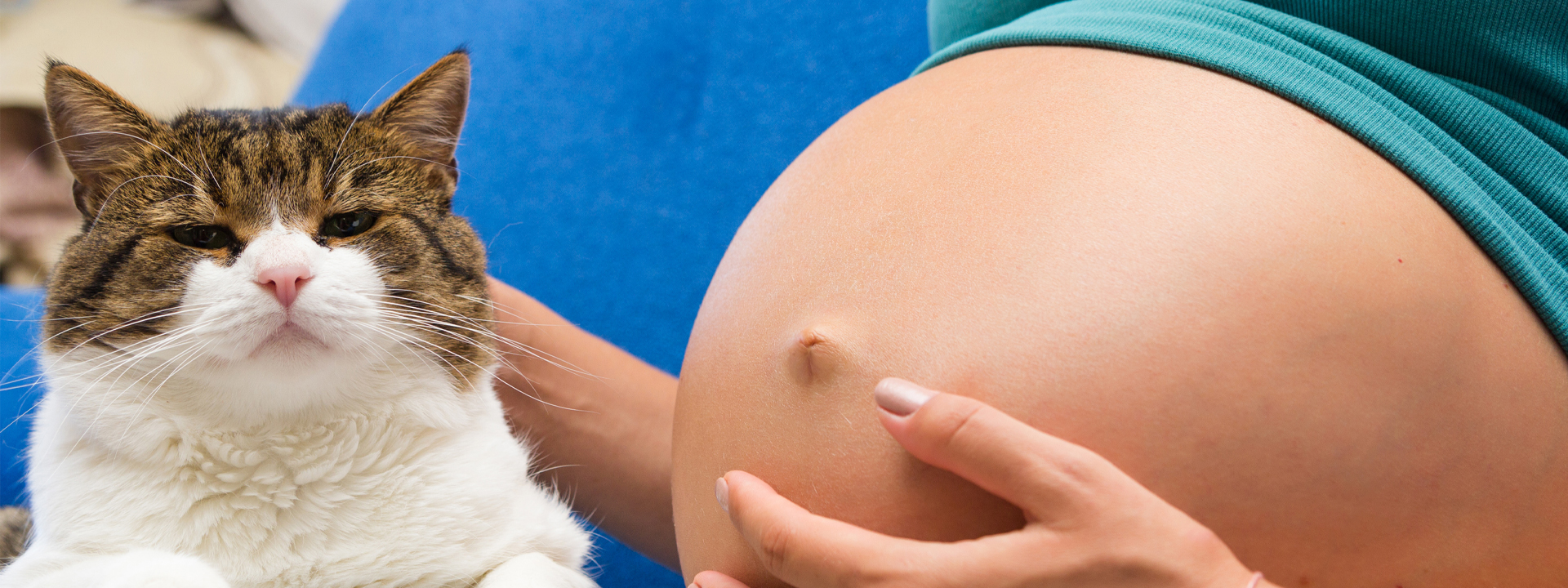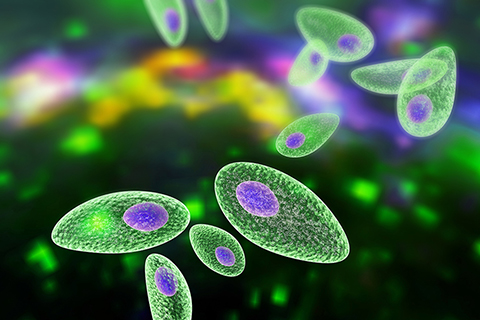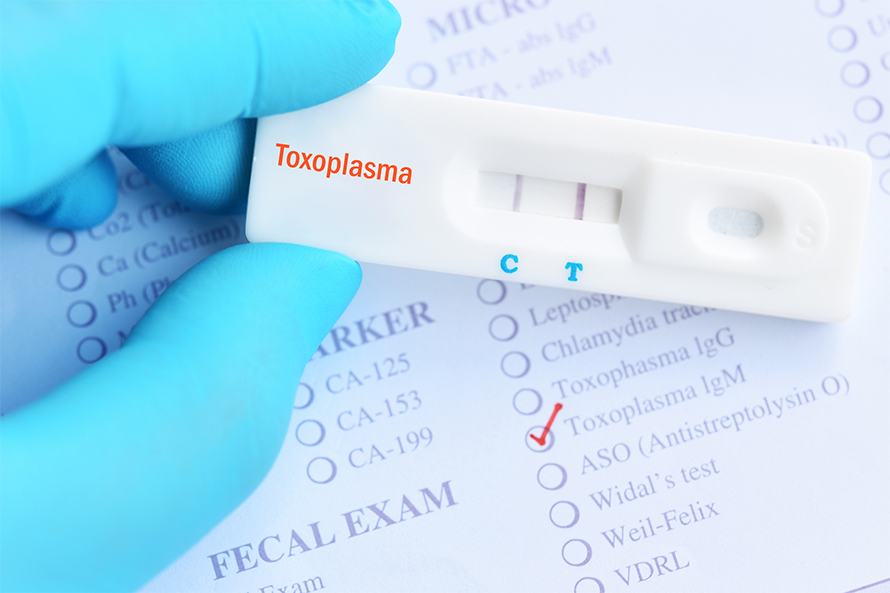
This common parasite causes birth defects — but the US doesn’t screen for it during pregnancy
Imagine the shock of your baby being born with a swollen brain, blindness and debilitating seizures. Now imagine learning that these devastating conditions could have been prevented if you took a simple test for the common parasite Toxoplasma gondii.
Toxoplasma can be picked up anywhere an infected cat has defecated, such as the litter box, sandbox, garden or yard. Other routes of infection include consumption of contaminated water, undercooked meat or shellfish. Most people experience mild illness and can get the infection under control.

However, if contracted for the first time while pregnant, Toxoplasma can cross the placenta and cause spontaneous abortion or serious birth abnormalities. Such mother-to-child transmission during pregnancy is called congenital toxoplasmosis. Up to 4,400 babies may be born with congenital toxoplasmosis in the U.S. each year.
As professor of microbiology at the Indiana University School of Medicine, I study the biology of Toxoplasma in my lab. Blood tests can monitor the amount of Toxoplasma antibodies in the parent. Increases indicate an acute infection is taking place, putting the fetus at risk of congenital toxoplasmosis. However, promptly administering anti-parasitic drugs to pregnant people who develop toxoplasmosis can help protect the fetus from the worst outcomes of congenital toxoplasmosis.
Several nations, such as France and Austria, have been testing and treating toxoplasmosis during pregnancy for decades. Brazil recently started a similar program.
However, Toxoplasma testing is not included in prenatal screening in the U.S.
Why screen for toxoplasmosis during pregnancy?
Toxoplasma is a widespread and stealthy infection. Over 40 million American adults are infected with the parasite, underscoring how easy it is to catch. And since the infection usually doesn’t cause overt symptoms, many mothers of infected babies cannot recall when or how they became infected.
Studies conducted in multiple countries have demonstrated the benefits of detecting and treating toxoplasmosis during pregnancy.

The first randomized clinical trial assessing the efficacy and safety of a treatment to reduce toxoplasmosis transmission prenatally, Toxogest, published its findings in 2018. Although the trial was halted due to lack of funding, results suggested that treatment not only reduced infection transmission, but also decreased disease severity for breakthrough infections.
A meta-analysis of 33 studies published from 2017 to 2021 also found that pregnant women given the antibiotic spiramycin also showed significantly lower rates of parasite transmission to their unborn child compared with untreated mothers.
For Jose Montoya, a toxoplasmosis researcher and clinician at the Remington Laboratory at Sutter Health, the value of screening is clear. “In countries that perform prenatal screening for toxoplasmosis, the severity of congenital toxoplasmosis is far less than what is routinely observed in the U.S.,” he said.
Congenital toxoplasmosis may be more common than believed
Some have argued that congenital toxoplasmosis is too rare to warrant prenatal testing. But the U.S. currently screens for conditions that are even rarer than toxoplasmosis, such as phenylketonuria.
The incidence of congenital toxoplasmosis may also be underestimated. Currently, there are no national surveillance data on toxoplasmosis available, as it is not a nationally notifiable disease in the U.S. Since most states do not monitor or report this infection during pregnancy, researchers don’t know how many miscarriages are caused by Toxoplasma or how many children suffer from the infection.
A 2021 report by the Centers for Disease Control and Prevention highlighted the shortcomings of toxoplasmosis surveillance in the U.S., stating that routine, standardized testing during pregnancy would provide crucial data to evaluate the scope of this threat to babies. Additionally, it would inform researchers on the causes of the high rate of stillbirths in the U.S., which disproportionately affect Black women.
Some researchers have warned that Toxoplasma prevalence may rise with the popularity of free-range, organically raised foods and climate change. Free-range animals are more prone to pick up infectious Toxoplasma oocysts in outdoor pastures and water sources, which have a higher likelihood of being contaminated with cat feces. Warmer temperatures and more powerful storms due to climate change promote oocyst persistence and dissemination in the environment – for example, through increased soil erosion polluting waterways.
Additionally, reports of unusually virulent Toxoplasma strains migrating from South America may exacerbate the severity of congenital toxoplasmosis infections in the U.S.
Costs of toxoplasmosis during pregnancy
“This disease not only has a steep physical and emotional cost, but also an important economic one,” said Rima McLeod, director of the Toxoplasmosis Center at the University of Chicago.
A study McLeod conducted in 2011 estimated that following France’s prenatal screening and treatment model could save U.S. taxpayers US$620 per child, or $2.5 billion annually.
Researchers have also developed new technologies that reduce concerns about the testing costs.
McLeod’s team developed an inexpensive finger-prick test that detects Toxoplasma within 30 minutes. Other researchers have also developed a saliva-based test.
How to avoid toxoplasmosis

Toxoplasma produces significant, lifelong neurological and vision impairments in hundreds of babies born in the U.S. each year. Congenital toxoplasmosis can be largely mitigated with prenatal testing and treatment protocols that are safe and easy to perform.
“Those who conducted the Toxogest clinical trial did not incorporate a placebo control because it was deemed unethical not to monitor and treat congenital toxoplasmosis,” Montoya said. “But currently, pregnant people in the U.S. are being relegated into such a placebo group – denied simple, low-cost procedures that could save their children from birth defects.”
Without systematic prenatal testing for congenital toxoplasmosis, the best that pregnant people can do is become vigilant to the risk factors. Those who are pregnant should avoid cleaning the litter box and other areas where cats may have defecated. Fruits and vegetables should be washed before consuming. Meat products should be cooked to proper temperature.
This article is republished from The Conversation under a Creative Commons license. Read the original article.
![]()
Enjoy reading ASBMB Today?
Become a member to receive the print edition four times a year and the digital edition monthly.
Learn moreGet the latest from ASBMB Today
Enter your email address, and we’ll send you a weekly email with recent articles, interviews and more.
Latest in Science
Science highlights or most popular articles

Building the blueprint to block HIV
Wesley Sundquist will present his work on the HIV capsid and revolutionary drug, Lenacapavir, at the ASBMB Annual Meeting, March 7–10, in Maryland.

Gut microbes hijack cancer pathway in high-fat diets
Researchers at the Feinstein Institutes for Medical Research found that a high-fat diet increases ammonia-producing bacteria in the gut microbiome of mice, which in turn disrupts TGF-β signaling and promotes colorectal cancer.

Mapping fentanyl’s cellular footprint
Using a new imaging method, researchers at State University of New York at Buffalo traced fentanyl’s effects inside brain immune cells, revealing how the drug alters lipid droplets, pointing to new paths for addiction diagnostics.

Designing life’s building blocks with AI
Tanja Kortemme, a professor at the University of California, San Francisco, will discuss her research using computational biology to engineer proteins at the 2026 ASBMB Annual Meeting.

Cholesterol as a novel biomarker for Fragile X syndrome
Researchers in Quebec identified lower levels of a brain cholesterol metabolite, 24-hydroxycholesterol, in patients with fragile X syndrome, a finding that could provide a simple blood-based biomarker for understanding and managing the condition.

How lipid metabolism shapes sperm development
Researchers at Hokkaido University identify the enzyme behind a key lipid in sperm development. The findings reveal how seminolipids shape sperm formation and may inform future diagnostics and treatments for male infertility.

